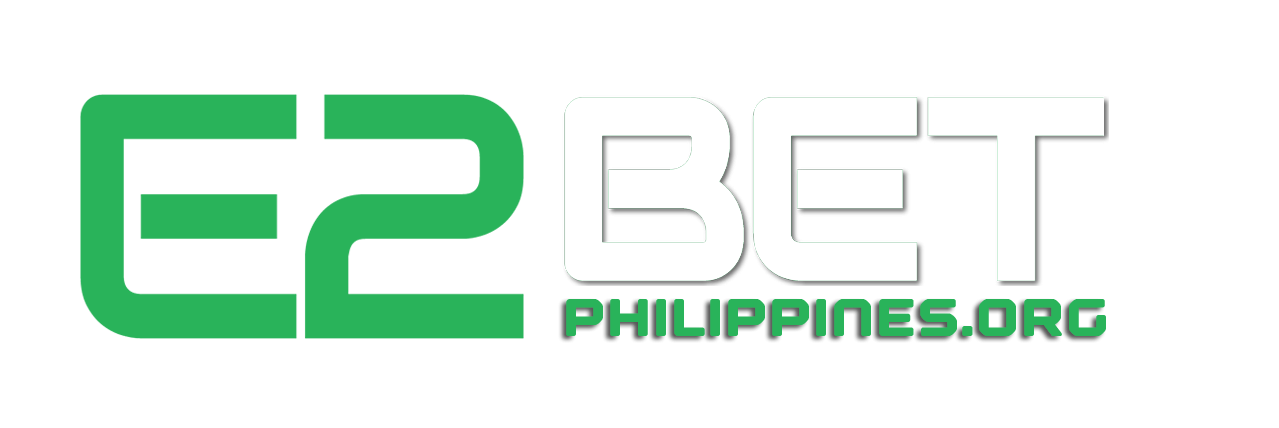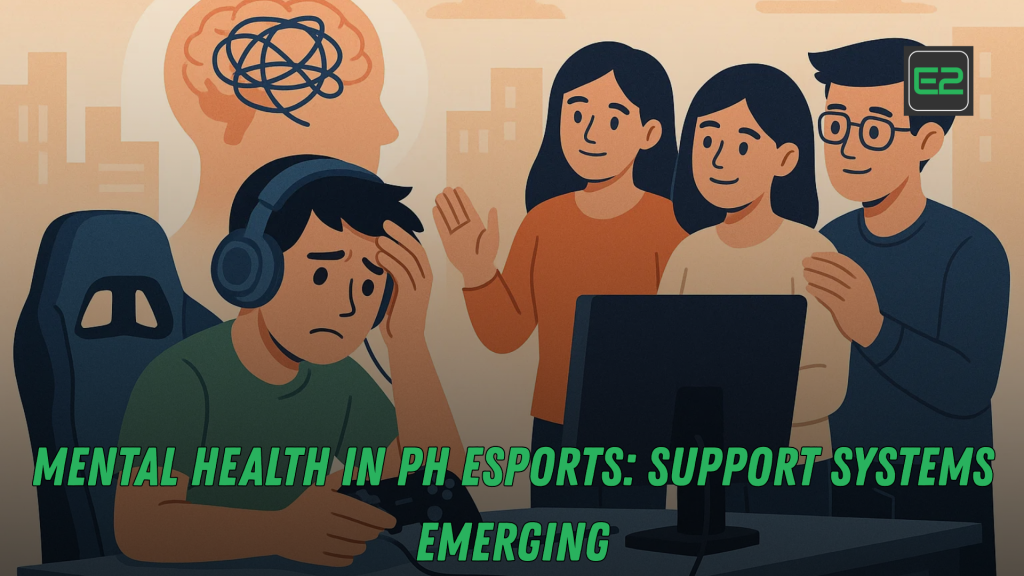Table of Contents
Why this conversation matters now
In this article, we use the phrase PH esports mental health to anchor best practices, so readers can search, compare, and implement support models with a shared vocabulary.
Esports in the Philippines has grown from internet café scrims to stadium finals, but the speed of that rise has outpaced the systems that protect minds and bodies. Burnout, sleep debt, anxiety around performance, cyberbullying, and erratic income cycles can silently erode careers, relationships, and team cultures. Addressing these realities is no longer optional. It is central to competitive stability, brand trust, and player longevity. This guide maps the current landscape, shows practical frameworks that any organization can adopt, and argues that caring for people is not just ethical—it is a competitive advantage.
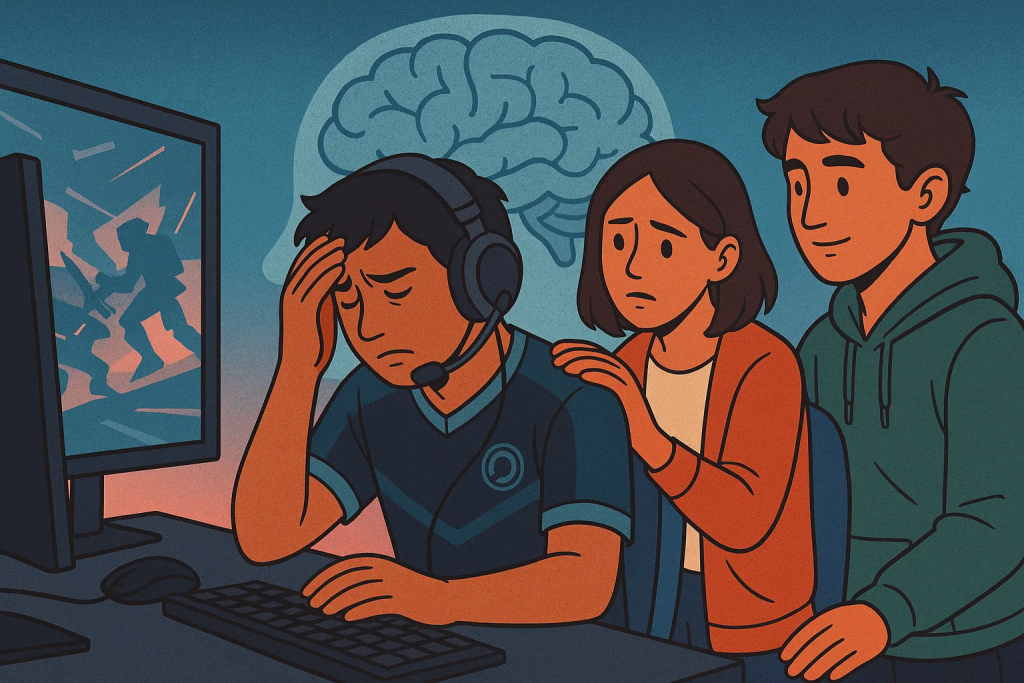
The landscape: pressures unique to Philippine esports
- Irregular schedules. Scrim blocks that slide late into the night collide with daytime sponsor work, destroying sleep architecture and mood regulation.
- Multi-role strain. Many athletes are also content creators, taking on streaming, short-form edits, and fan events to stabilize income—leaving little bandwidth to decompress.
- Connectivity and housing constraints. Patchy internet or cramped households increase stress during training and online matches.
- Community proximity. Fans and critics often live in the same digital rooms; parasocial dynamics and public callouts can escalate quickly.
- Migration and distance. Players who relocate to bootcamps manage homesickness and culture shock alongside performance expectations.
The science in practical language
Mental health is not a binary of “fine” or “broken.” It is a continuum of capacity to think clearly, regulate emotion, connect with teammates, and recover between challenges. Three mechanisms matter most in daily esports practice:
- Sleep pressure vs. circadian rhythm. Light exposure, caffeine timing, and late competitive arousal shift sleep later, degrading executive function the next day.
- Allostatic load. Repeated stress without adequate recovery raises baseline cortisol and heart rate, narrowing tolerance for mistakes and criticism.
- Social buffering. Supportive relationships—peer, coach, family—are the single strongest protective factor against depression and dropout.
Support systems that are emerging—and how to build them
Below is a stack that organizations can assemble piece by piece. You do not need a stadium budget to start.
- Mental performance coaching. Short, skills-based sessions that teach breathing, pre-match routines, attentional resets, and debrief scripts.
- Sleep and schedule hygiene. Fixed wake-up times, afternoon light walks, caffeine curfews, and scrim curfews two nights before match days.
- Nutrition simple wins. Hydration targets, protein anchors, and carb periodization around scrims; practical meal kits for bootcamps.
- Peer-support circles. Weekly 45-minute check-ins facilitated by a trained staffer; agenda: highs, lows, blockers, and plans.
- Access pathways to clinicians. Clear, confidential referral routes to licensed psychologists and psychiatrists, with cost-sharing for sessions.
- Crisis playbooks. A one-page plan per team: who to call, what to say, what not to say, and how to pause training safely.
- Digital boundaries. Office hours for DMs, rotating social media duty, and in-house moderation that filters harassment before it reaches players.
Who owns what: players, coaches, orgs, events, and fans
- Players: Track sleep, mood, and energy; ask for schedule clarity; use the warmup and cooldown scripts the team agrees on.
- Coaches: Normalize supportive feedback; run short tactical meetings; protect practice intensity caps; praise recovery behaviors.
- Organizations: Provide insurance, session stipends, and written policies; staff at least one trained mental performance coordinator.
- Tournament operators: Publish match times early; enforce reasonable broadcast windows; staff quiet rooms and wellness corners.
- Fans and community: Amplify boundaries; report harassment; celebrate callouts that promote kindness and disable dogpiling.
A practical framework: the 3–2–1 weekly cycle
- Three micro-skills to train: e.g., two-cycle box breathing, focus cues, and a reset phrase after mistakes.
- Two recovery anchors: a fixed wake time and a 20-minute light walk before noon on off-days.
- One relationship action: a gratitude message to a teammate, coach, or family member.
The point is not perfection; it is consistency. Tiny, repeatable behaviors compound into resilience.
Screening, privacy, and consent
Sensitive data needs careful handling. If a team screens for mood or sleep, keep data visible only to the athlete and a designated clinician, not to selection committees. Offer opt-in participation and explain why the measure helps the athlete first. Publish a short privacy notice in plain language and provide a contact for questions.
Education beats stigma
Short lunch-and-learn sessions can reset a locker room’s culture. Topics that land well:
- “How to spot burnout early”
- “Caffeine timing and performance”
- “Conflict without contempt”
- “Social media first aid”
Record sessions so absent members can catch up. Repetition reduces stigma and builds common language.
Bootcamps and housing: design for recovery
A good bootcamp is not just a practice room with fast internet. It is a recovery space. Prioritize:
- Dark, quiet sleeping rooms with curtains and temperature control.
- Light exposure in the morning: open areas or short outdoor walks.
- Separate content stations so creators do not disrupt sleepers.
- Simple kitchen setups: rice cooker, water filters, and a protein source.
- Clean, flexible spaces for stretching and breathing drills.
Parents and partners: the hidden performance staff
Many young athletes rely on parents or partners to buffer stress, manage finances, and maintain hope when results wobble. Provide them with a one-page guide: basic schedule, contact persons, signs that warrant professional help, and how to talk about losing weeks. Invite them to one open forum per split to ask questions and share concerns.
Case study (composite): turning a slump into a reset
A Tier 2 roster was bottom three in scrim win rate for a month. Instead of doubling practice hours, the manager trialed three changes: a fixed wake time, a 30-minute weekly peer circle, and a match-day comms checklist that banned sarcasm. Within four weeks, tilt incidents dropped, players reported fewer headaches, and the team climbed to middle of the table. No single trick fixed everything; the stack did.
Barriers that still block progress
- Budget myths. Teams assume care is expensive; in reality, many interventions cost less than new jerseys.
- Hero culture. Glamorizing all-nighters and “grindset” messaging discourages help-seeking.
- Fragmented referrals. Players do not know where to go, or fear being benched for disclosing distress.
- Policy gaps. Contracts rarely mention counseling stipends, quiet rooms, or protections against online harassment.
Policy recommendations for leagues and publishers
- Require a written mental health policy and a point person for each team.
- Provide a shared directory of licensed clinicians familiar with esports.
- Set reasonable start times and firm end times for official matches.
- Train broadcast staff to avoid sensationalizing meltdowns or private struggles.
- Offer confidential reporting lines for harassment and doxxing.
Digital hygiene for competitive clarity
- Notification fasting. Mute nonessential channels during focus blocks.
- Inbox triage. Schedule one or two windows per day for messages to prevent constant context switching.
- Harassment filters. Use moderation tools and community managers to intercept abuse before it lands.
- Device ergonomics. Wrist position, chair height, and screen distance are mental health issues disguised as posture.
Playbooks you can copy today
- 90-minute reset practice. Warmup (10), focused scrim (60), review (15), cooldown (5). What is not in the block does not exist.
- Two-minute post-death reset. Stand, breathe, and label the last mistake without judgment. Return to role cues.
- Match-day social buffer. No DMs two hours before match start; a staffer holds the phone.
- Off-week wellness check. Each player books one session with a coach or counselor—no performance talk, just life admin.
Analytics with compassion
Use data to help humans. Track sleep duration, session start drift, and tilt incidents without turning the locker room into a lab. Share only team-level patterns unless an athlete opts in to individual review. Data should increase choice, not shame. When used gently, it guides staffing, scheduling, and content expectations.
Resources directory (PH-focused, examples to look for)
- University counseling centers that accept external referrals.
- Telehealth platforms with licensed psychologists and psychiatry access.
- NGO hotlines and peer-led mental health communities.
- Faith and community groups offering nonjudgmental listening.
Create a private, vetted list for your players and update it each split.
Call to action: build one layer this week
Pick one low-cost change and ship it in the next seven days. Add a fixed wake time to the team calendar, schedule a 45-minute peer circle, or draft a crisis one-pager. Share what you tried and what you learned. Every roster that reduces stigma and improves rest becomes a proof point that care drives results.
Culture and stigma: speaking in the language people actually use
Conversations about care land differently in every country. In the Philippines, family ties, faith communities, and a strong ethic of resilience shape how athletes ask for help. Instead of abstract theory, frame support in practical steps: clear sleep and nutrition routines, simple breathing skills, and predictable schedules. When leaders say out loud that asking for help is a pro move, stigma drops. In that spirit, we will name PH esports mental health often and plainly, because the phrase connects competitive goals with daily behaviors.
The return on investment of care
Turn empathy into spreadsheets. Track churn, scrim availability, injury and illness days, and sponsor deliverables. When rest improves, availability rises, and mistakes shrink. In two to three splits, that stability converts into playoff berths and renewed contracts. This is not vague. It is a business case. If a team spends a fraction of travel budget on sleep coaching, counseling stipends, and moderation tools, the payoff is measurable in win probability and creator output. Treat PH esports mental health as a core operating metric, not just a poster on a wall.
Sleep protocols that fit esports
Start with what the team can control: a fixed wake time, light exposure before noon, and a caffeine cutoff eight hours before bed. Add a 10-minute wind-down ritual—stretching, journaling, or breathwork—and aim for a bedroom that is cool, dark, and quiet. Rotate scrims earlier two days before official matches. Use blue-light management wisely; bright screens are fine before noon, dim after sunset. None of this is glamorous, but every improvement shows up on reaction time and decision speed. Teams that operationalize PH esports mental health often begin with sleep because it is the cheapest force multiplier.
Fueling the brain: hydration and macros
Brains run on glucose and stable electrolytes. Under-hydration worsens headaches and mood variability, while protein anchors keep athletes satiated through long review sessions. Build a simple template: water bottle on every desk, fruit and yogurt for quick carbs and protein, and consistent meals around scrim blocks. Supplements are secondary; consistency is king. When bootcamps organize food with the same rigor as draft prep, PH esports mental health stops being a poster and becomes daily practice.
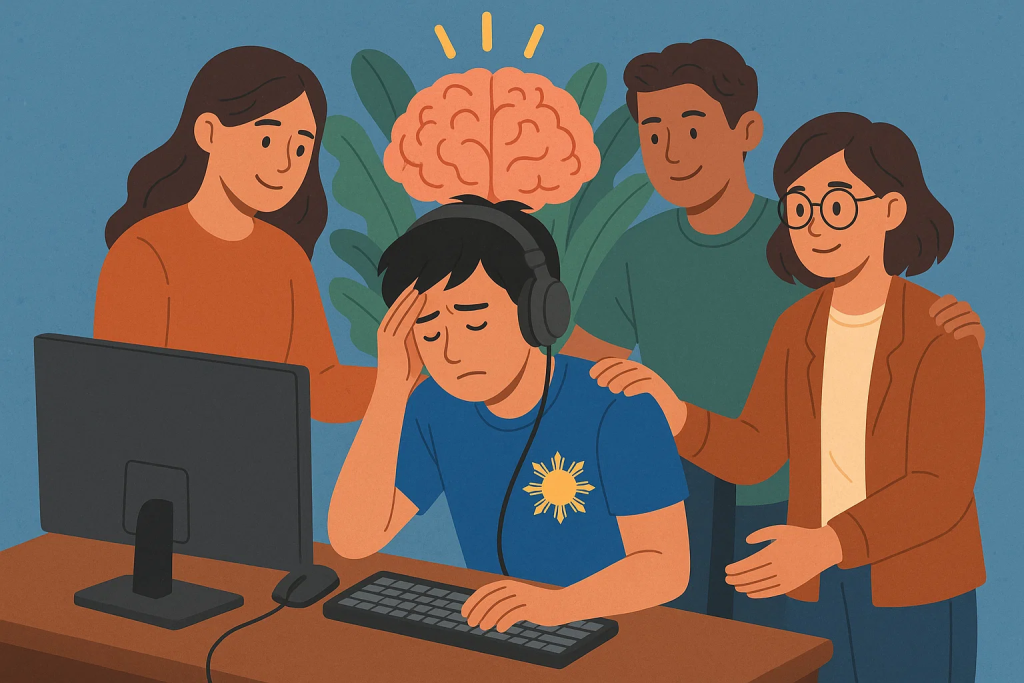
Streamers, creators, and the content treadmill
Many pros supplement income through streaming, brand deals, and short-form content. The treadmill never ends—unless you install a switch. Schedule content days separate from macro-review days. Buffer uploads during tournaments. Assign a staff moderator to filter comments. Reduce the cognitive load of constant performance by creating templates for titles, overlays, and ad reads. Maintain a creator calendar that respects match weeks. These boundaries are not luxuries; they are conditions for sustainable careers and PH esports mental health in a creator economy.
Campus esports and the student-athlete balance
Student players juggle labs, internships, and training. A realistic template is a three-day training week with one competition day, plus asynchronous VOD review. Faculty partners can help with quiet rooms and exam flexibility. Student orgs should publish a mental health resource sheet and maintain a peer-mentor roster. When universities normalize accommodations and publish simple care playbooks, recruitment improves, alumni give back, and PH esports mental health becomes part of campus life rather than a private struggle.
A coaching manual in five pages
Keep it modular. Page one: values and boundaries. Page two: practice blocks and intensity caps. Page three: feedback scripts that remove contempt. Page four: conflict rituals and repair steps. Page five: referral pathways. Bind it, teach it, and review it monthly. If a new assistant joins mid-split, the manual cuts onboarding chaos in half. The manual also makes PH esports mental health a living document, not a one-time slide deck.
Tournament operators as stewards of well-being
Events set the tone for the whole ecosystem. Publish schedules early, cap broadcast days, and police the harassment that spills across comment sections. Provide quiet rooms, hydration stations, and routes to medical staff. Invite third-party counselors to be on call during finals. When TOs adopt these basics, players trust the circuit and fans experience a kinder show. In policy documents, state plainly that PH esports mental health is a pillar of event quality alongside fairness and competitive integrity.
Brand and sponsor playbooks
Sponsors influence incentives. Instead of demanding daily content during playoffs, shift to pre-produced packages that minimize sleep disruption. Create brief templates for talking points so athletes spend less time scripting. Offer bonuses for community service or workshop hosting, not just for hours streamed. These changes keep brand lifts strong without draining reserves. A sponsor that invests in PH esports mental health builds durable goodwill and higher lifetime value across campaigns.
Measurement without micromanagement
A little data goes a long way. Track three metrics per week: average sleep duration, practice punctuality, and self-reported energy. Do not chase perfection; look for drift. If bedtime slips an hour later, adjust scrims or caffeine timing. If energy reports drop for two weeks, shorten reviews or schedule a rest day. Data should empower athletes to self-correct, not hand ammunition to critics. As teams mature, the same philosophy can guide content cadence so creators protect PH esports mental health while hitting deliverables.
A 30–60–90 day build for small orgs
- Days 1–30: Write a one-page mental health policy, choose a fixed wake time, and run a weekly 45-minute peer circle.
- Days 31–60: Contract a part-time counselor, add hydration and snack stations, and formalize a match-day comms checklist.
- Days 61–90: Establish a content calendar with social buffers, publish a harassment reporting channel, and budget small stipends for counseling.
Each milestone is small, but together they move the needle. This is the fastest way to professionalize PH esports mental health without blowing up cash flow.
Scripts and templates you can steal
- After a mistake: “Pause. What was my read? What is the next role cue?”
- Giving feedback: “Behavior I saw → impact on play → suggestion.”
- Requesting help: “I’m hitting a wall with sleep; can we adjust scrim start by 30 minutes this week?”
- Boundaries with fans: “I appreciate the support; I won’t be checking DMs two hours before match.”
Templates reduce friction and give shy players a way to speak early. They also keep PH esports mental health grounded in practical language.
A research agenda for the Philippines
We need local data. What scrim times minimize tilt? How do family responsibilities shape training windows? Which neighborhoods lack safe, quiet spaces for sleep? Partner with universities to run small, ethical studies that answer these questions. Publish open summaries so other teams can learn. Over time, a knowledge base specific to the archipelago will sharpen programs, reduce waste, and mainstream PH esports mental health across tiers.
Myths and facts
- Myth: Talking about stress makes it worse. Fact: Naming emotions reduces their intensity and shortens recovery time.
- Myth: Only pros need systems. Fact: Amateurs, creators, coaches, and staff benefit equally.
- Myth: You must choose between performance and rest. Fact: Rest is the substrate of performance.
These reframes are the front door to cultural change. Keep repeating them until PH esports mental health feels normal to say out loud.
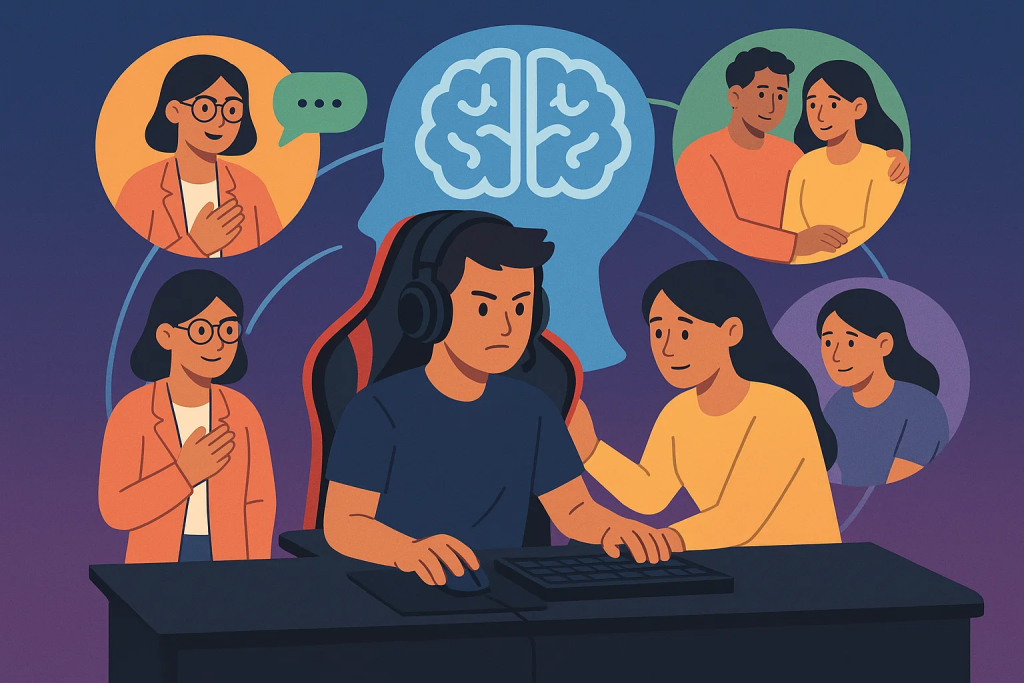
Glossary for fast onboarding
- Allostatic load: The wear-and-tear of chronic stress on the body and mind.
- Buffering: The protection a person receives from supportive social ties.
- Comms checklist: A short list that defines what is said and what is off-limits during matches.
- Quiet room: A low-stimulation space staffed by a responsible adult.
This glossary speeds up training and aligns expectations in mixed-experience rosters, closing the gap between intention and PH esports mental health in daily routines.
Key takeaways you can implement now
- Establish a fixed wake time to stabilize PH esports mental health during split cycles.
- Schedule weekly peer-support circles so PH esports mental health gains social reinforcement.
- Create a crisis one-pager that centers PH esports mental health when emergencies interrupt scrims.
- Adopt caffeine cutoffs to protect sleep and PH esports mental health on match weeks.
- Publish harassment reporting links to shield PH esports mental health from online abuse.
- Budget counseling stipends because PH esports mental health requires paid, confidential access points.
- Train moderators to filter DMs and guard PH esports mental health before broadcasts.
- Design quiet rooms at events to uphold PH esports mental health for finalists.
- Bundle hydration and snacks to steady energy and PH esports mental health daily.
- Use data gently so PH esports mental health improves without shaming individuals.
- Normalize rest days to sustain PH esports mental health across long tournament calendars.
- Align sponsor asks with sleep to respect PH esports mental health in playoffs.
- Document onboarding manuals that weave PH esports mental health into culture from day one.
Start small, be consistent, measure, and share your learnings.
Frequently asked questions
1) Do we need a full-time psychologist?
Not immediately. Start with a part-time consultant, mental performance coaching, and a clear referral network. Grow as needs and budgets allow.
2) Will players hide problems if help is tied to selection?
Yes, which is why screening data should be confidential and separated from team selection. Incentivize participation with education and small perks, not threats.
3) How do we talk about mental health without sounding soft?
Use performance language: reaction time, decision speed, and poise under pressure. Emphasize that recovery behaviors are tactical advantages.
4) What if a crisis happens mid-scrim?
Pause immediately. Follow the crisis playbook: ensure safety, contact the designated responder, and reschedule. No match is worth a meltdown.
5) How can fans help?
Respect boundaries, report harassment, and amplify positive norms. Celebrate teams that publish care policies and model kindness.
